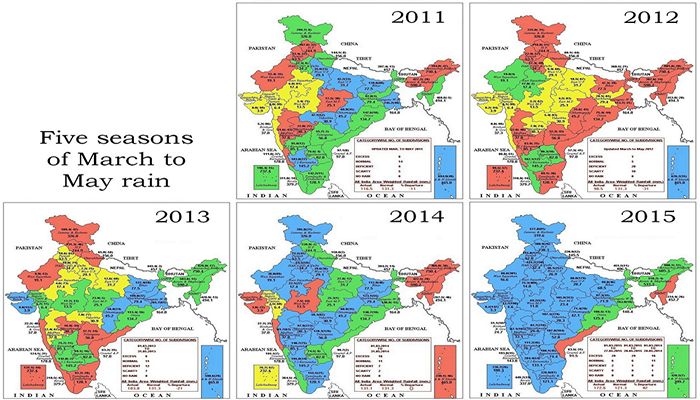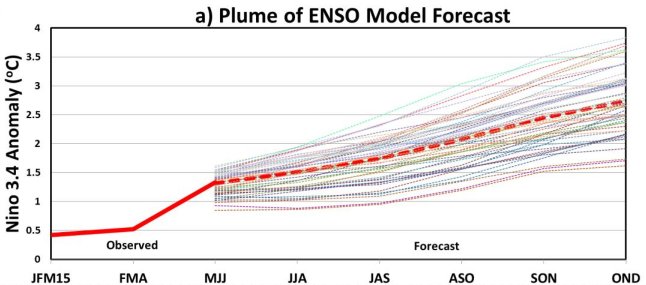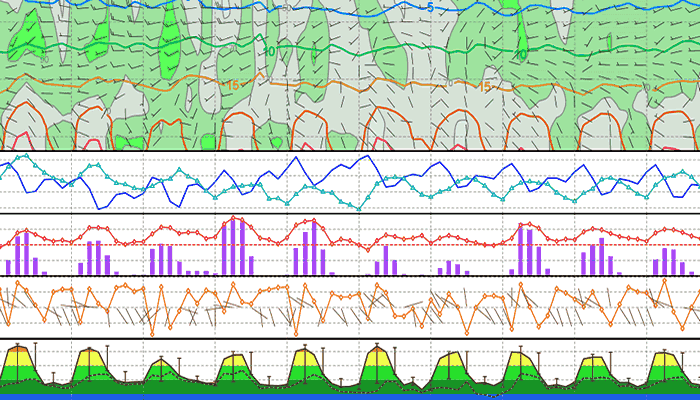
A village threatened by rising floodwaters in Arunachal Pradesh. Image: Arunachal Times
Torrential rain in north-east India has caused rivers to swell with water, several above their danger marks, and has isolated entire districts. Reports from Arunachal Pradesh, Assam and Meghalaya – states that have experienced heavy to very heavy rain over the last four days – indicate a situation for the region that is approaching an emergency.
#monsoon2015 Next 6 days' rain for NE India. Red hues are 50-90 mm/day. Intensity lessens from 15th #Assam #Arunachal pic.twitter.com/YWEJ2BQCFD
— Indiaclimate (@Indiaclimate) June 10, 2015
The Indian Express has reported that thousands of people in Assam have been affected with several rivers, including the Brahmaputra, overflowing their banks. The rivers have breached embankments, inundated villages and damaged standing crops, affecting over 80,000 people, according to the state disaster management body.
The Arunachal Times has reported that the districts of Upper Siang, Dibang Valley and Anjaw are cut off from the region due to torrential rainfall which has triggered flash floods and landslides at various locations. Major rivers in Arunachal Pradesh including the Siang are in spate. The Echo of Arunachal has reported that Pasighat, the state’s oldest administrative town, is under threat of inundation and the provision of water and electricity to town inhabitants has stopped.






 Whether the monsoon starts off on time, whether the June, July, August and September rainfall averages are met, and whether the seasonal pattern of the monsoon is maintained are expectations that must now be set aside.
Whether the monsoon starts off on time, whether the June, July, August and September rainfall averages are met, and whether the seasonal pattern of the monsoon is maintained are expectations that must now be set aside.


 Every one of Haryana’s 21 districts received excess rain for the period 1 March to 30 April 2015. As these rains have destroyed crops, including food staples, the need to compensate the affected farming families is now paramount. Relief and support are only useful when they are arrive quickly, and unlike administrative conditions two generations ago, state governments and district collectors today can consult data around the clock about conditions in districts and blocks.
Every one of Haryana’s 21 districts received excess rain for the period 1 March to 30 April 2015. As these rains have destroyed crops, including food staples, the need to compensate the affected farming families is now paramount. Relief and support are only useful when they are arrive quickly, and unlike administrative conditions two generations ago, state governments and district collectors today can consult data around the clock about conditions in districts and blocks.


 Our coverage of the ‘mausam’, the Indian summer monsoon of 2015, has begun. The unseasonal rains of March and April, which have proved so destructive to farmers, have shown why the conventional monsoon season must be widened. You will find all
Our coverage of the ‘mausam’, the Indian summer monsoon of 2015, has begun. The unseasonal rains of March and April, which have proved so destructive to farmers, have shown why the conventional monsoon season must be widened. You will find all